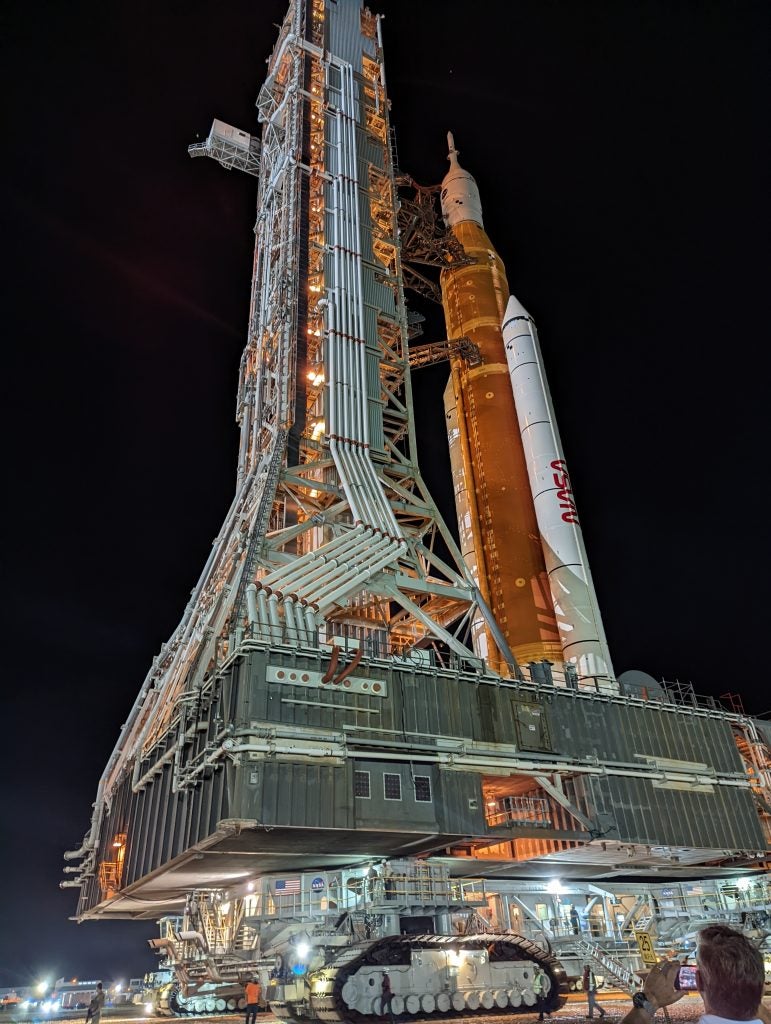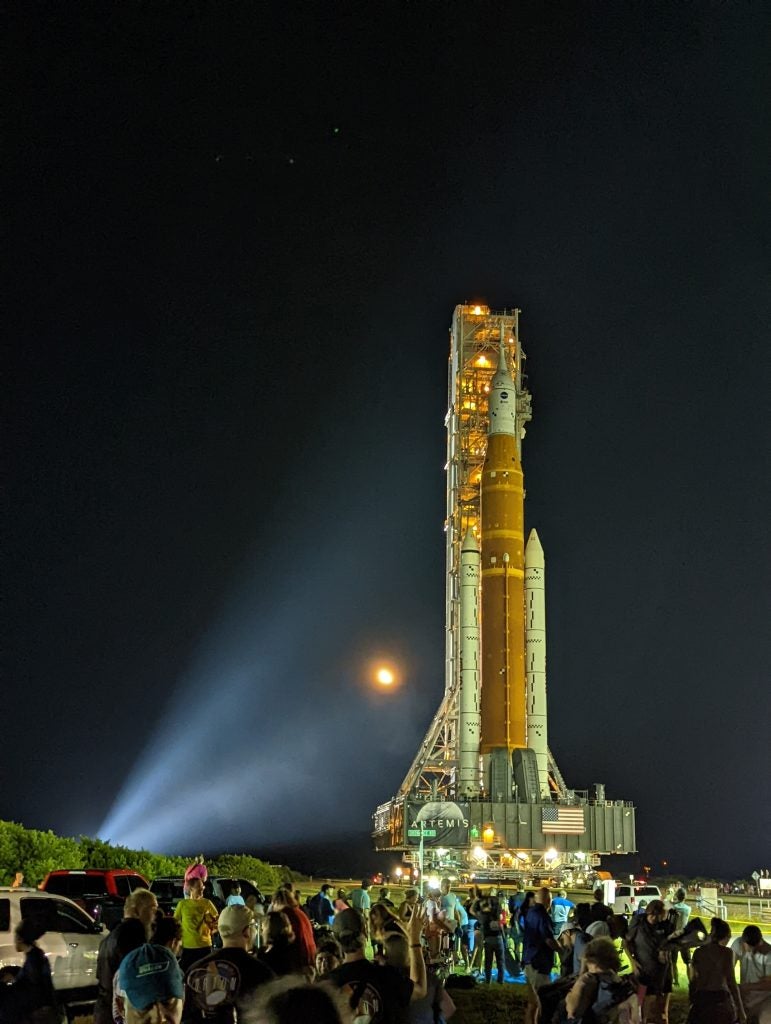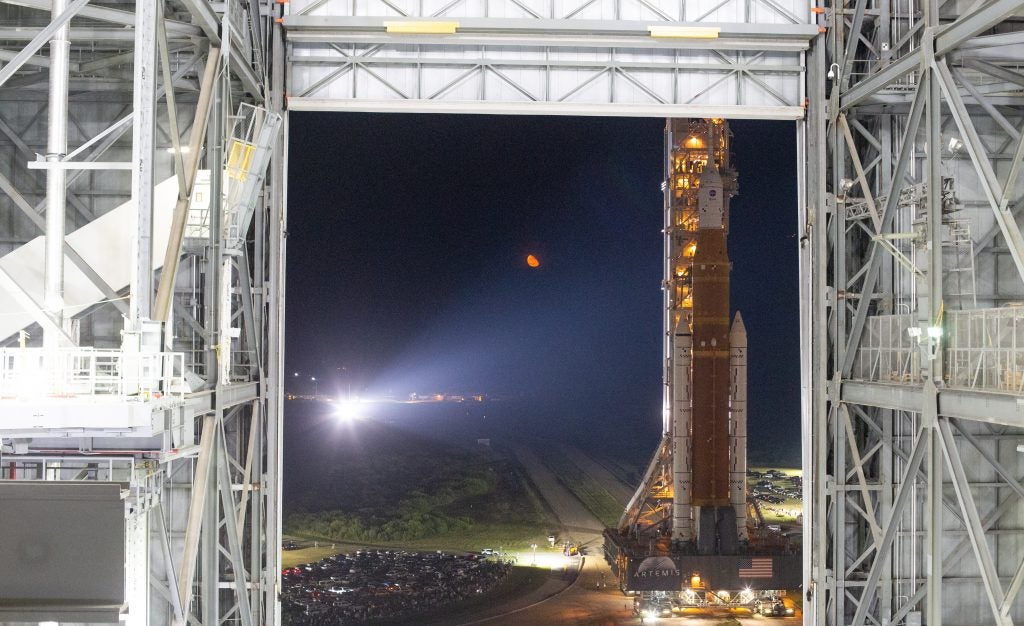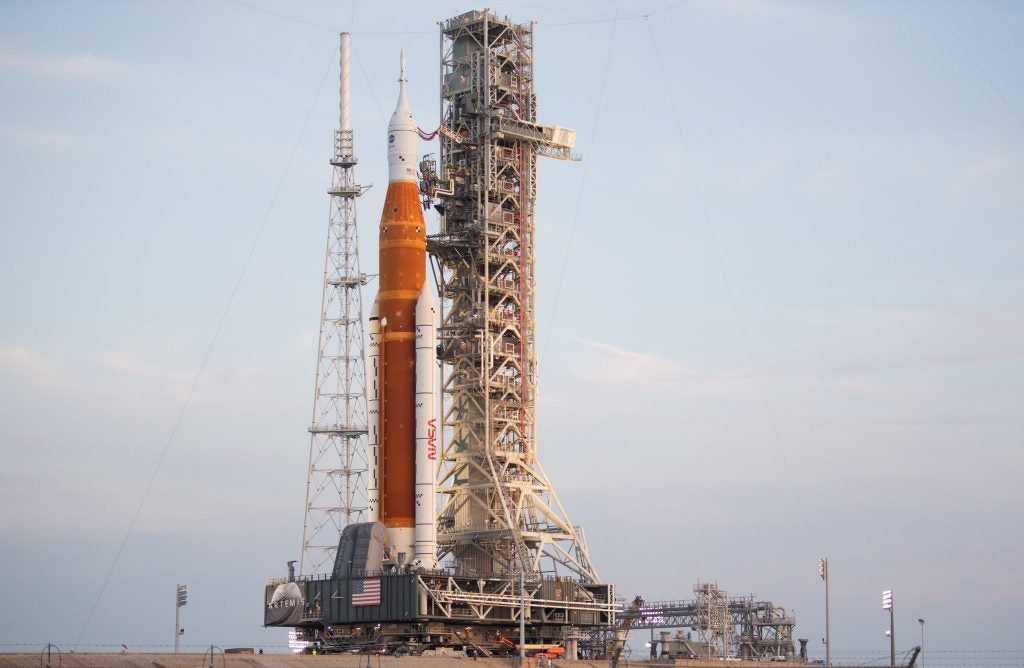NASA’s Artemis I Completes Rollout and Now Targets the Moon
At 10 PM EDT on 16 August, the mammoth Space Launch System (SLS) began moving out towards the Cape Canaveral beach. For the first time since 1972, a launch campaign to put a human spacecraft into lunar orbit had begun.

Nearly 50 years to the day since the previous super-heavy launch vehicle was rolled out for launch, Artemis I follows the legacy of Apollo 17 and aims to inspire the world. Steeped in financial and technical controversy, the SLS and the Artemis program as a whole are either going to prove to be the stuff of legend or a national embarrassment. This first mission, Artemis I, is an uncrewed test of the complete Space Launch System which has been in development since 2011. SLS will loft the Orion spacecraft into the moon’s orbit where it will remain for about 40 days before returning. The longest mission of an undocked human spacecraft to date.
The launch vehicle, weighing in at 5.75 million lbs. (2,600,000 kg), is currently 3 years behind schedule and $7 billion over budget. Overall the program has rung up a bill of $25 billion but isn’t expected to bring humans to the moon until 2024.
Like all good government megaprojects, the work has been divided among the 3 major players in the US military industry. Boeing has been tasked with constructing the largest hydrogen core stage ever built, Northrop Grumman with the most powerful solid rocket boosters ever cast, and Lockheed Martin with a spacecraft of unequaled precision and safety. All combined they create the heaviest and most complicated orbital launch vehicle ever to fly.

As with the Saturn V of the 1960s which had to compete with the Soviet N-1, the SLS has competition as well. The Chinese, in their quest to become ever more strategically relevant, have embarked on a systems engineering adventure of their own. The Long March 9 is expected to be remarkably similar in architecture to the SLS. However, unlike the previous moon race where the Soviets were a year ahead of the US, China is nearly a decade behind the US by their own schedule.

While purely civilian these megaprojects reflect on the military industry as a whole. The contrast between the SLS which will fly in 2 weeks, and the Long March 9 which will fly in 8 years, symbolizes the current technological disparity between the US and China. This contrast in high-level systems engineering can also be seen in China’s inability to produce nuclear carriers, large multi-engine aircraft (barring copies), and tilt-rotors. China’s technology base has made incredible progress over the last two decades, but it still needs at least one more to catch up.

